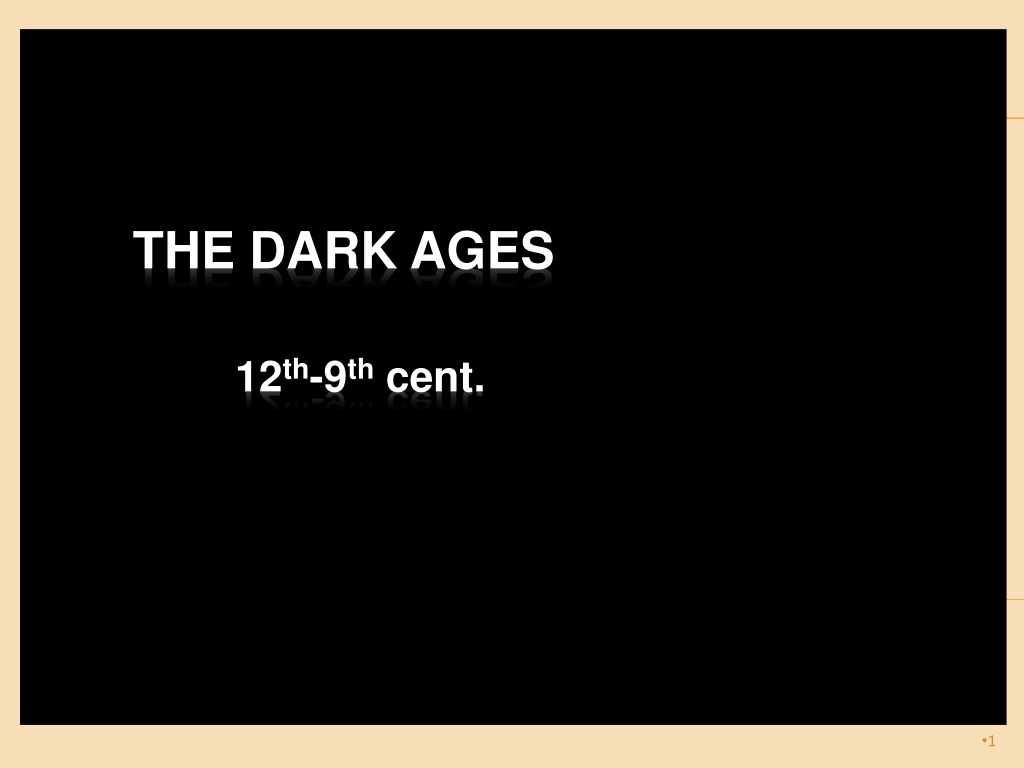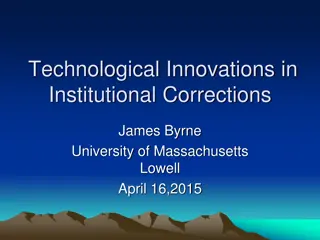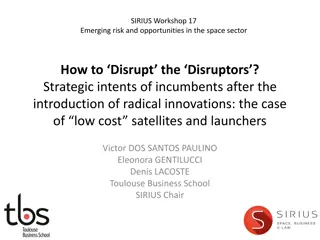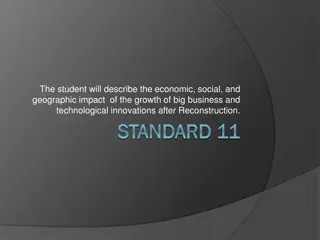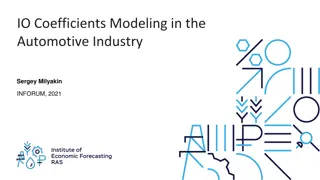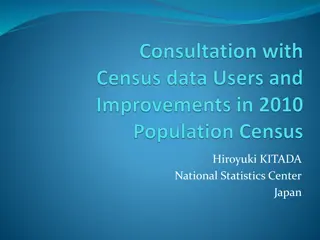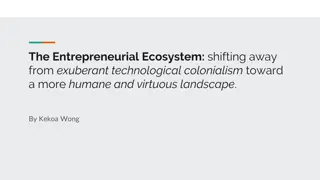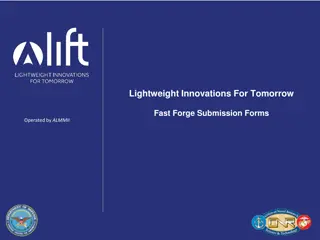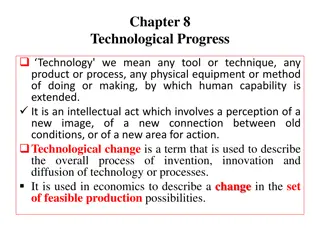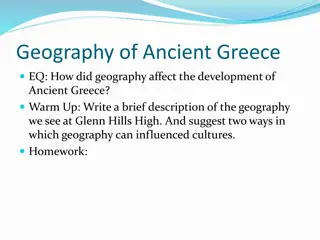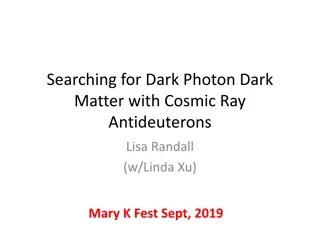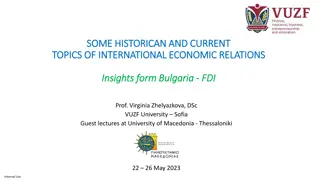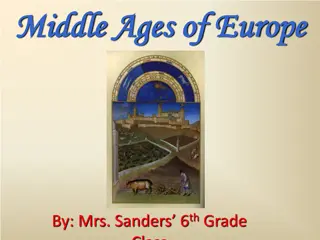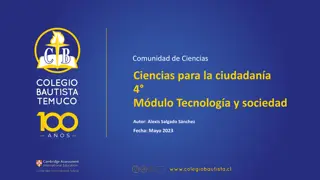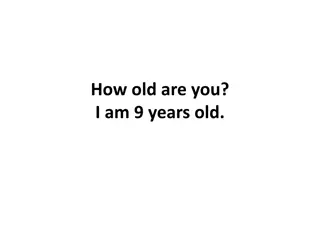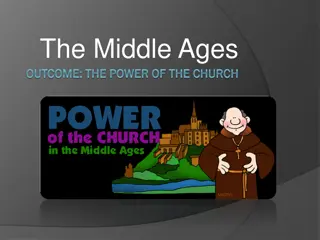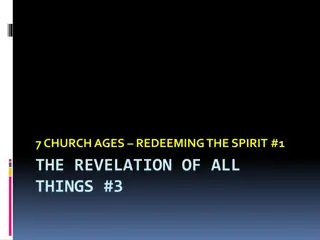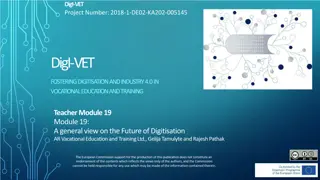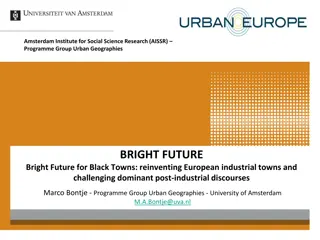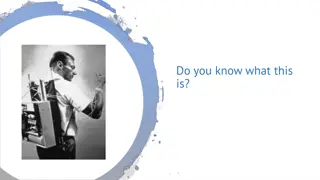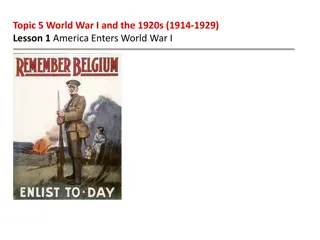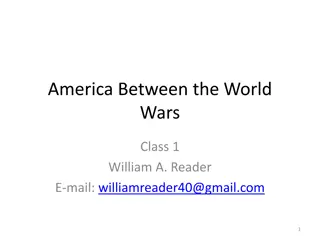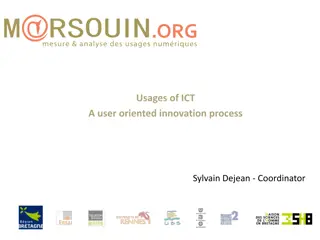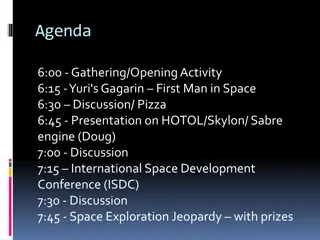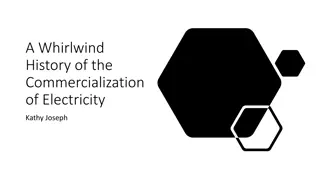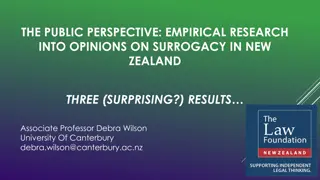Insights into the Dark Ages: Archeological Findings and Technological Innovations
Delve into the Dark Ages through archeological discoveries revealing a lower level of civilization and sparse written records. Explore the spread of iron use, evolution of pottery, and advancements in technology during this period. Witness the transition from the Sub-Mycenaean period to the Protogeometric and Geometric styles, showcasing progress and innovation amidst societal changes.
Download Presentation

Please find below an Image/Link to download the presentation.
The content on the website is provided AS IS for your information and personal use only. It may not be sold, licensed, or shared on other websites without obtaining consent from the author. Download presentation by click this link. If you encounter any issues during the download, it is possible that the publisher has removed the file from their server.
E N D
Presentation Transcript
THE DARK AGES 12th-9thcent. 1
DARK AGES ON THE BASIS OF THE ARCHEOLOGICAL FINDINGS The meaning of the darkness The meaning of the darkness: lower level of civilization no writing + few archaeological findings from few places Sources Sources: archaeology + Homeric epics (not about events but social, political, economical and cultural situation) Main question Main question: To what extent was there a continuity? Big territorial differences: the depopulation is smaller on the borders of Hellas the recovery was faster close by the Aegean sea 2
Wanderings of the Greek Tribes 11th-10th cent. Doric invasion: Myth of the return of the Heraclids Mainly infiltration into the depopulated areas 3
SPREADING OF IRON USE The lowest level of the material culture: the 11th cent. - but at the same time technological innovations: use of iron and new pottery use of iron and new pottery Bellows (fire-fan) is necessary Only out of necessity (although harder and more persistent) Much cheaper than bronze >> iron weapons have been available for great part of the citizenry (since the 8th cent.) >> changes in warfare >> social-political changes 4
Pottery of the dark ages First part of the epoch: regression Second: progress (~ soc. and eco. circumstances) Sub-Mycenaean period (late 12th cent. early 11th cent.) The former style lives on in a simplified manner + local styles Sub-Mycenaean vaze 5
Protogeometric Period Protogeometric Period (11th-10th cent.): Progress started Technological innovations Technological innovations Faster poter s wheel Ruler Pair of compasses Higher temperature >> Well-proportioned vessels Finer decoration (stripes, circles, semicircles) Shiny glaze Late protogeometric vase End of the 10th cent. 6
GEOMETRIC STYLE (9th-8th cent.) Vessels with new form, new motifs Straight or square motifs: zigzag lines, triangles, squares, meanders and double meanders (they fill in the whole surface, later they only frame the figures) The figures become more and more emphasized 7
Late geometric Dipylon vase (around 750) 8
SOCIETY IN THE DARK AGES Little villages, which didn t join to a center Widespread poverty. Insignificant social differences Cremation (burying again from the 8th century on) 9
ECONOMY IN THE DARK AGES Solely animal husbandry (farming again from the 9th century on) No specialized industries. Poor quality production The long-distance trade broke off. Subsistence farming (autarky). Only the Phoenicians traded until the 8th century 10
The house of the basileus in Lefkandi 50x10 metres Gold jewellery originating from far distant territories: the whole Hellas is not poor 11
DARK AGES ON THE BASIS OF THE HOMERIC POEMS The Homeric question since the antiquity: When and how did the poems come into being? Who composed them? Which period do they depict? << The story is set in the Mycenaen age, but it was written down only in the 7th-6th century + inconsistencies in their texts 12
ORAL POETRY Milman Parry: the poems came into being in the course of several centuries Repetitive elements (can be amplified and formed): formulas (set phrases) e. g. swift-footed Achilles , ox-eyed Hera narrative structures (typical scenes) e. g. When rosy fingered dawn appeared + hexameter Aoidos: creative artist Rhapsodos: approx. from the 8th cent. on, only a performer phorminx 13
WHICH AGE DO THE POEMS GIVE US INFORMATION ABOUT? 1. The poems want to represent the age of the heros i. e. the Mycenaean age Mycenaean age but they came into being during the centuries of the dark age dark age and got their final form and were written down in the archaic age. archaic age. 14
WHICH AGE DO THE POEMS GIVE US INFORMATION ABOUT? 2. In accordance with the Mycenaean age In accordance with the Mycenaean age (with the linear B tablets and the archaeological findings): the story the poems know the main Mycenaean centres some characteristic Mycenaean objects such as the helmet out of boar tusk some notions and grammatical peculiarities of the poems 15
WHICH AGE DO THE POEMS GIVE US INFORMATION ABOUT? 3. THE ARHAIC AGE THE ARHAIC AGE The poems have information about The poems have information about the invasion of the kimmers in the 7th cent. the colonization the birth of the polis beginning of the hoplite warfare But the poems don t know about But the poems don t know about communities without kings writing Greek merchants 16
WHICH AGE DO THE POEMS GIVE US INFORMATION ABOUT? 4. THE POEMS GIVE US INFORMATION MAINLY OF THE DARK AGE THE POEMS GIVE US INFORMATION MAINLY OF THE DARK AGE In accordance with the archaelogical findings: there were only a few agricultural and industrial activity (occupation) no palaces no writing no Greek merchants no shaft or tholos graves life was very simple 17
USING THE POEMS AS HISTORICAL SOURCES 1. P POLITICAL OLITICALCONDITIONS CONDITIONSON ONTHE THEBASIS BASISOF OFTHE THEPOEMS POEMS The most important communities in the poems: Home of Odysseus in Ithaca The city of Troy The Greek camp near Troy The island of the Phaiakians The oikos oikos is the basic unit of society and industry: self-sufficient household Was there a state Was there a state which the oikoi were part of? Was there a central government? Were there political institutions? 18
USING THE POEMS AS HISTORICAL SOURCES 2. There was a council and an assembly. Jurisdiction was regulated. Nevertheless, the power of the basileus was controversial: was he a king or only the leader of a village? The main tasks of him: leading the army representing the community offering sacrifices His power is divine and inheritable Custom defines his rights and duties: decision-making and exercise of power has an order His power is weak: it depends on his material and mental capabilities (the rivals can challenge it) In a greater community there were several basileis (nobles or the leaders of the smaller settlements): the main basileus had to consult them He didn t govern: he had no officers and no court 19
Il. 2. 196-8 The rage of kings is strong, they're nursed by the gods, their honor comes from Zeus they re dear to Zeus, the god who rules the world. Od. 11. 495-8 If you have heard anything about excellent Peleus, tell me, whether among those numerous Myrmidons yet he is honored or if instead they do him dishonor in Hellas and Phthia since he is held by his hands and his feet in the trammels of old age; 20
Il. 18. 580-92 And the people massed, streaming into the marketplace where a quarrel had broken out and two men struggled over the blood-price for a kinsman just murdered. One declaimed in public, vowing payment in full the other spurned him, he would not take a thing so both men pressed for a judge to cut the knot. The crowd cheered on both, they took both sides, but heralds held them back as the city elders sat on polished stone benches, forming the sacred circle, grasping in hand the staffs of dear-voiced heralds, and each leapt to his feet to plead the case in turn, Two bars of solid gold shone on the ground before them, a prize for the judge who'd speak the straightest verdict. 21
THE HOMERIC (DARK AGE) WORLDVIEW Okeanos: fresh-water, every water originates in it Earth: flat and round (but in the 6th cent. it is a globe) Two continents (Libya is only an extension of Asia) On the edge of the world lived wondrous creatures (e. g. Laistrygones, lotus-eaters) Tartaros Uranos Helios: a god who sails back in a golden vessel in the night Aer Aither Cosmos: ordered, symmetrical (cosmogony, theogony) 22
Omphalos Omphalos (in Delphi) Olympus meant the present-day mountain only from the 5th cent. on Olympus Delphi 23
THE HOMERIC CONCEPT OF MAN 1. Human beings are psychosomatic unities (not a body + soul) It is a part of the body we think and feel with. There is no separate soul (and there are no parts of the soul) The most important expression for the place of the mental happenings is the thymos: its meaning: breath, vital principle or force it is not independent of the body it doesn t live on after death 24
THE HOMERIC CONCEPT OF MAN 2 <> from the archaic age on: man is body + soul (psyche) Psyche (has a new meaning): independent of the body and it lives on after death source and place of all mental activities the true self (essence) of man 25
THE HOMERIC CONCEPT OF MAN 3 Plato s critique of Homer: The heroes (who are the ideals of man) are motivated by their emotions and desires, not by their mind: - that kind of action is vicious, unworthy of man and selfish In this way both the individual persons miss their lives and the community is factious and weak 26
CONCEPT OF GOD IN HOMER 1 The gods are similar to men but their power is greater and they are immortal They are not transcendent/allmighty/omniscient They regularly appear and form the life of men The outstanding events, the important aims and emotions of men originate from the gods Success and failure depend on the gods - they have favourite cities and people, whom they support, while they don t like others, and therefore they do harm to them but without moral considerations 27
CONCEPT OF GOD IN HOMER 2 The gods are not good The gods are not good >> they punish or reward nobody neither here nor in the otherworld The criticism of Plato: this concept of god insults the gods and has a detrimental effect on the morals of men What What they questioning of their power offending humans, things, institutions standing under their protection priests, temples, oath, hospitality, supplication they punish punish: 28
IMAGE OF THE OTHERWORLD There is no afterlife. Only an unconscious shadow lives on (the psyche) but some people get into the Tartarus: because of their hybris others get into the Elysium (Isle of the Blessed): on account of their family relations with the gods <> archaic age: the gods are good >> they punish or reward humans new concept of the soul (it is immortal) new concept of the otherworld new ethical approach (virtue makes one happy) 29
HOMERIC VALUE SYSTEM 1 Tim : honour, prestige, esteem (it depends on the assessment of the community) Its basis: military achievements, wealth, power The main motivation of an Homeric hero is to have the greatest possible tim Agon (contest): also in later times in most fields of life: e. g. sports, the philosophical and political debates, while performing communal tasks, in lawsuits, in artistical activity Geras (gift): expression of tim : the size of tim determines the measure of the due geras (tax, booty) (+ it can be the instrument of alliances and trade) Kleos: fame, reputation, glory: the size of tim determines it (like in the case of the geras) the example of Achilles 30
HOMERIC VALUE SYSTEM 2 Aidos Aidos: : shame, sense of shame, regard for others, what holds back from doing evil External control: respect of the community s sentiment The one who is dihonoured (= put to shame), undergoes a loss in his tim The Homeric culture is a shame-culture: the sanction for evil deeds is people s talking (rumour) The cause of aidos can be: cowardice or failure As a war cry too: Aidos argeioi! Also Hector considers aidos (and so tim ) when he is about to fight against Achilles 31
HOMERIC VALUE SYSTEM 3 INDIVIDUAL AND COMMUNITY The most important values and goods depend on the community to a considerable measure >> therefore everybody has to respect others to some measure. On the other hand the Homeric heros care only for their own tim and kleos:they are individualist. The Troyans and Hector, just like Odysseus in the Odyssee are less self-interested. Responsibility for the community and patriotism are more important for them (than for the Greeks in the camp near Troy). 32
HOMERIC VALUE SYSTEM 4 Traditional morality is lacking (there is a warlike morality) Aret (later: virtue) =noble birth (+ wealth and power) Agathos (later: morally good) =noble person (+ wealthy and powerful) - who has aret its opposite: kakos The desirable but not necessary characteristics of the agathoi: they are good warriors, they worship the gods, keep their words, have self-restraint, respect the women and old people, care for the weak and the distressed etc. e.g. they remain agathoi even after the massacres and plunders - see the suitor of Penelope 33
XENIA (GUEST-FRIENDSHIP) A sacral institution: Zeus is its protector A duty to give food, drink and accomodation to the travellers and refugees, and later on gifts too An inheritable bond comes into being (regular exchange of gifts, mutual assistance) e.g. Diomedes and Glaucus, Alkinoos vis-a-vis Odysseus, Nestor- Telemachus, Cyclopes-Odysseus, Paris-Menelaus (in Sparta) 34
